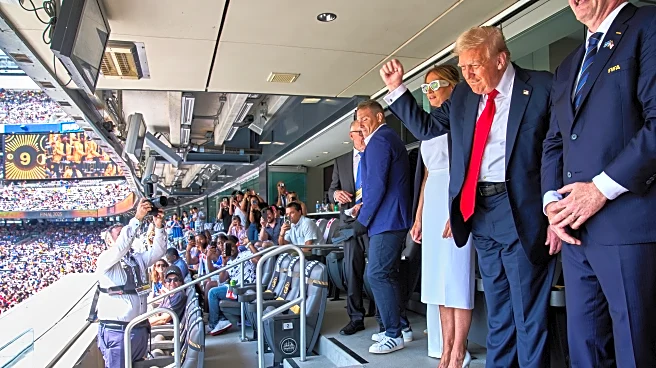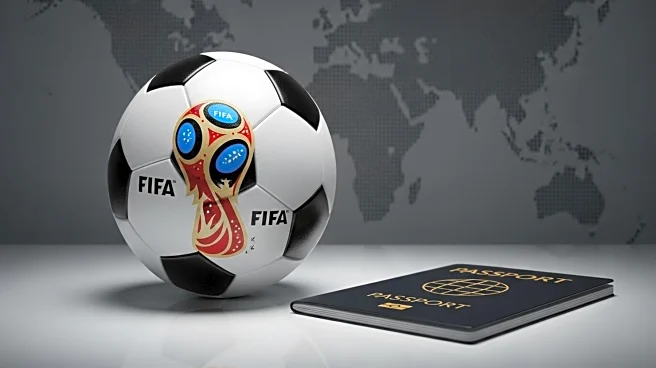What's Happening?
FIFA President Gianni Infantino has expressed his approval of the new official match ball for the 2026 World Cup, named TRIONDA. Developed by the German company adidas, the ball is designed to embody the unity and passion of the host nations: Canada, Mexico, and the United States. Infantino highlighted the aesthetic appeal and the symbolic significance of the ball, which he believes will enhance the experience of the tournament. The 2026 World Cup is set to be hosted by these three countries simultaneously, marking a unique collaboration in the history of the event. The tournament is scheduled to take place from June 11 to July 19, 2026.
Why It's Important?
The introduction of the TRIONDA ball is significant as it represents the collaboration between three nations in hosting the World Cup, a first in the tournament's history. This development underscores the growing trend of multinational cooperation in global sports events, potentially setting a precedent for future tournaments. The design and technology of the ball could influence gameplay, impacting teams' strategies and players' performances. Additionally, the involvement of adidas in creating the ball highlights the role of major sports brands in shaping the identity and experience of international competitions. The successful execution of this event could bolster the reputation of the host countries in organizing large-scale sporting events.
What's Next?
As the 2026 World Cup approaches, preparations will intensify across the host nations. Infrastructure development, security arrangements, and promotional activities are expected to ramp up. Stakeholders, including national football associations and local governments, will focus on ensuring a seamless experience for teams and fans. The unveiling of the TRIONDA ball may also lead to marketing campaigns by adidas, aiming to capitalize on the global attention. Fans and teams will likely anticipate further announcements regarding the tournament's logistics and participating teams. The collaboration between Canada, Mexico, and the United States could inspire other regions to consider joint bids for future World Cups.
Beyond the Headlines
The choice of the TRIONDA ball reflects broader cultural and diplomatic themes, emphasizing unity and cooperation among the host nations. This could foster stronger ties between Canada, Mexico, and the United States, extending beyond sports into political and economic realms. The event may also serve as a platform for addressing global issues such as sustainability and inclusivity, with the host countries potentially showcasing initiatives in these areas. The World Cup's impact on tourism and local economies could be substantial, offering opportunities for businesses and communities to benefit from increased international exposure.












